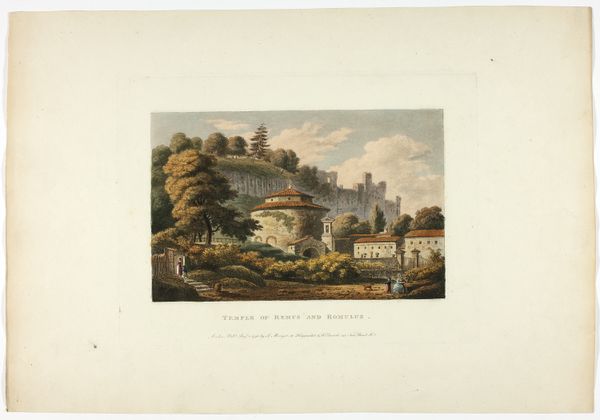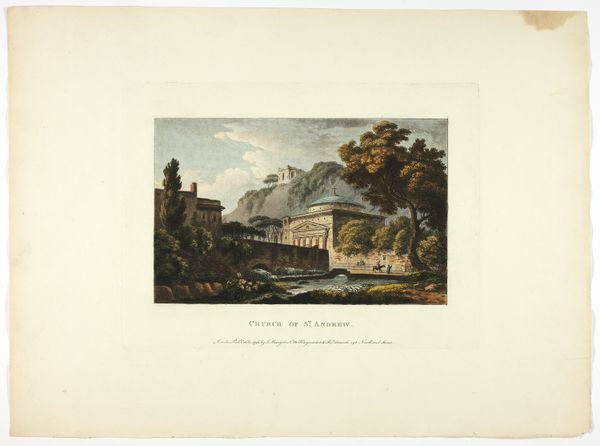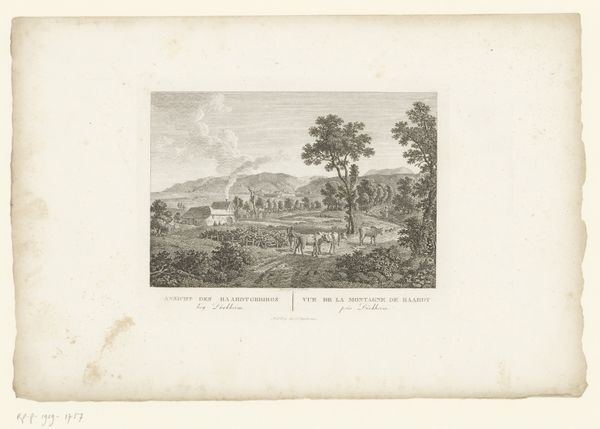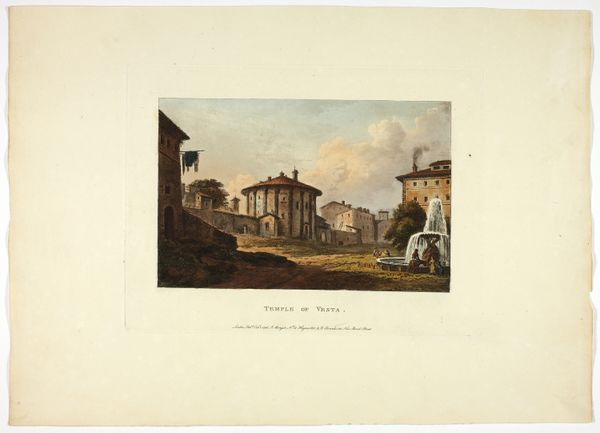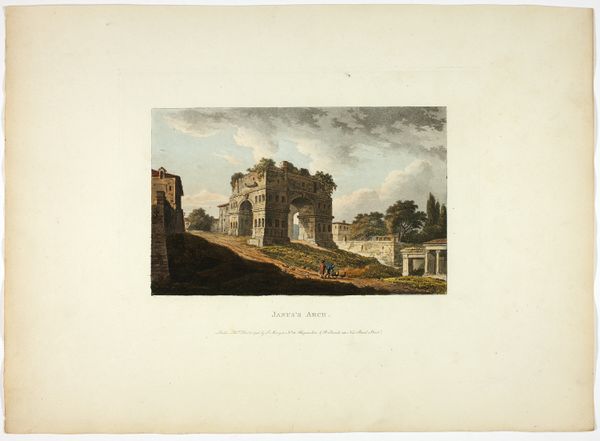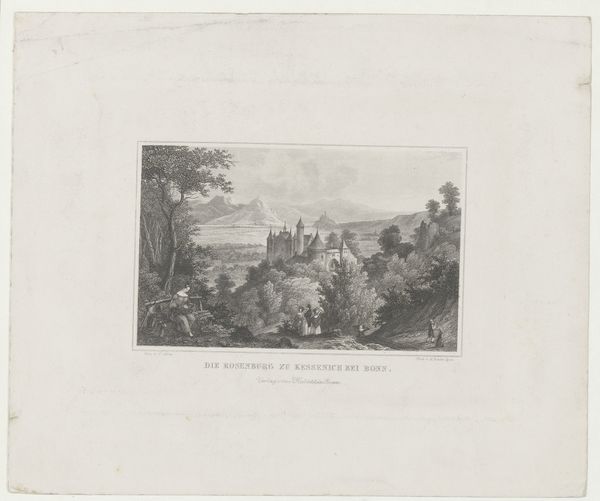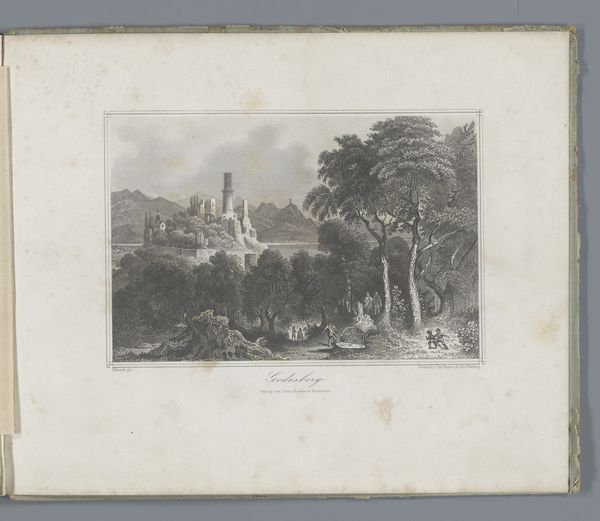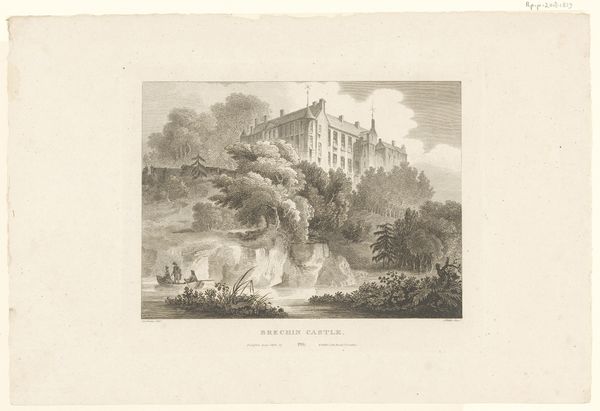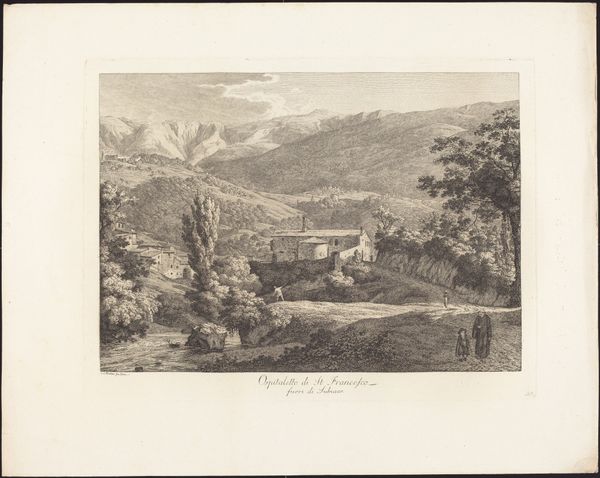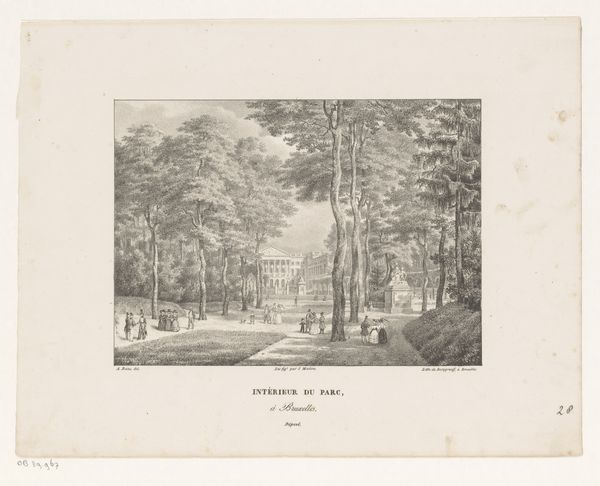
Arch of Septimus Severus, plate four from the Ruins of Rome Possibly 1897
0:00
0:00
Dimensions: 330 × 448 mm (sheet)
Copyright: Public Domain
Curator: This is M. Dubourg's print "Arch of Septimus Severus, plate four from the Ruins of Rome," potentially created around 1897. It's held right here at the Art Institute of Chicago. Editor: It has a decidedly peaceful feeling. The soft watercolors give the hard Roman architecture a gentleness I wouldn't expect. Curator: Indeed. It showcases how the Roman empire becomes picturesque ruins to the late 19th-century eye. Consider the means of its production; prints like this were easily circulated, disseminating an idea of Rome and its history far beyond Italy itself. The paper and watercolor—materials readily available at the time— democratized access to classical imagery. Editor: That's a fascinating point. These ruins became cultural exports. You see that dome in the background—almost certainly a later Christian addition. So, what we are really observing isn’t simply the “pure” form of antiquity, but later repurposing. These ruins become a stage for constant ideological re-negotiations! The city itself acting as canvas for new narratives. Curator: Precisely. And look at the seemingly casual addition of figures at the base. How that seemingly simple decision impacts its reception is paramount. It's not just a monument; it's a lived space. These figures also indicate scale, and therefore grandeur. The arch and its stones have a material reality tied to extraction and construction. Editor: And destruction, and subsequent artistic production, such as we are contemplating now. These prints shaped collective memory and understanding of Rome. Think about who commissioned such pieces, who consumed them, and the power dynamics at play in shaping that historical narrative. How the act of drawing or printing this served specific cultural functions. Curator: Yes. I suppose we could consider how that plays against our current digital reproducibility of imagery...but perhaps that’s another discussion for another artwork. Editor: Quite! Perhaps another time we can explore these nuances further.
Comments
No comments
Be the first to comment and join the conversation on the ultimate creative platform.
